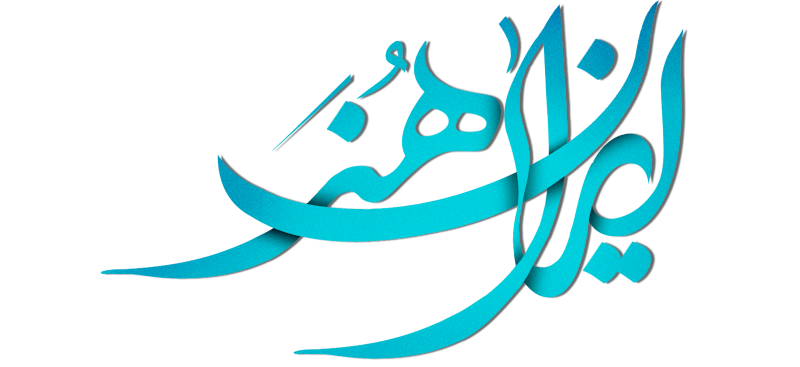Ali Shirazi | Ali Shirazi Calligraphy | Tehran Auction
Ali Shirazi's Special Blue in Tehran Auction

A unique blue piece with the striking title "The sky is not blue" is shown together with Ali Shirazi's tenth appearance at the Tehran Auction.
IranArt : A unique blue piece with the striking title "The sky is not blue" is shown together with Ali Shirazi's tenth appearance at the Tehran Auction.
Experts from Tehran Auction have valued the artwork, which was made in 2011 using the acrylic technique on canvas and measures 150 by 150 centimeters. It will be auctioned on January 26, 2024, at the Parsian Azadi Hotel, for 600 to 800 million Tomans, or approximately 11 to 15 thousand dollars.
1:
Four key elements are consistently present in Shirazi's calligraphies: painting activity, proper letter writing, creative composition, and breathtakingly vast dimensions.

Ali Shirazi, a well-known Middle Eastern classical calligraphy who was born in 1960, is renowned for using big pens and writing with just one stroke. Twenty years ago, he took up calligraphy and quickly established his own identity. Even at a distance, many are able to identify Shirazi's work without seeing his signature.
2:
The accumulation of lyrical, soft, and calming blue color in the upper and bottom corners of the frame marks the start and finish of this piece. The audience is engulfed by the empty, black area at the center of the piece, which resembles a black hole in the sky.
These various readings are one of the traits of Shirazi calligraphy. If the piece's title is unknown to you, how will you know if the blue is making progress or if the black is taking control of the painting?
3:
Paintings or Calligraphy? Which kind of art is the subject of Master Shirazi's current series? This represents the opposite of the ambiguity that underlies most of the calligraphic paintings created by the artist. Without knowing anything about Shirazi's oeuvre, an uninformed observer would surely mistake this artwork for a choreographed and letter-twisted painting. The excellent calligraphy discipline and its rigorous adherence to all norms, however, will probably catch the attention of a visitor who is aware of Shirazi's schooling and vast expertise in classical handwriting.
In this piece, we are simultaneously viewing a calligraphic piece and a painting. Again, the audience will determine which comes first, but in this instance, we can argue that since the picture is essential the painting comes first! Especially when the skilled artist makes the words unintelligible by leaving the letters unbound.
4:
This and other pieces by Shirazi have a black background as a recurring theme. It is unclear whether these vivid and sculpture-like letters were created in the middle of a completely dark and pitch-black night, or if this night was already bright and wonderful before all of this blackness invaded it. The ambiguity and mystery of the piece add to its attractiveness, as the audience interprets it according to their own beliefs and emotional state. Of course, the artist chose to use a clear title for this piece in order to make its message more apparent.
5:
The composition of the object allows it to be shown either way, even though the creator of the piece has indicated the top and bottom of the artwork by signing it. One of the explanations for this is that Shirazi focused solely on the work's aesthetics and its visual effect, writing and arranging the letters freely, separately and singularly, according to their value as art.

6:
The calligraphies of Shirazi are becoming more and more well-known in the Middle Eastern art trade. Apart from his notable $60,000 Christie's auction result in 2012, the Iranian artist has fetched amazing amounts for highly sought-after pieces at Bonhams London and other auction houses; reputable websites such as Art Price have samples of his past sales.
https://images.app.goo.gl/KfPodCaRJG7eBnGg9
Master Shirazi's work can be found in several of the Middle East's most important collections, including those of prominent Arab poet and writer, Mohammad Al Murr in the United Arab Emirates; the Al Owais Institute in Dubai; the Anwar Gargash collection in Dubai; the Juma Al Majid collection in Dubai; the museums in Sharjah, Doha, and Qatar; the most significant private collectors, such as Pasargad Bank of Iran; and religious collections in Iran, including Tehran's Quran Museum and Imam Ali Religious Arts Museum.
Update: This work was sold on January 26, 2024 at the 19th Tehran auction for one billion and 870 million tomans ($33,400).

